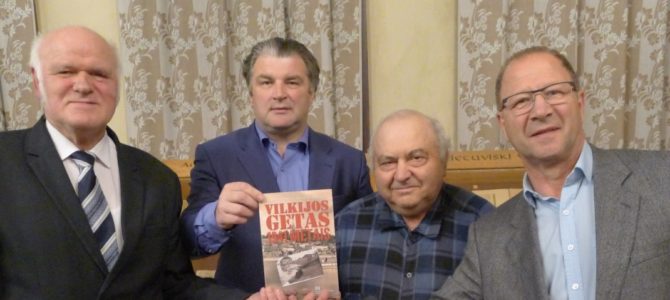The rare books department of the Kaunas Public Library hosted the launch of the book “Vilkijos getas. 1941 metai” by Aleksandras Vitkus and Chaim Bargman. Vilkija deputy alderman Algimantas Smolenskas led the event.
Kaunas Jewish Community chairman Gercas Žakas spoke about Lithuanian Jewish community activities before 1940 and the active participation of Jews in the country’s cultural, economic and social life.
Participants discussed current commemoration policies, Lithuanian and Jewish relations, what goes into determining Nazi collaboration, education and other topics.
The Jewish community formed in the village of Vilkija, just 30 kilometers from Kaunas, in the late 18th century. According to the censuses, there were 652 Jews in Vilkija in 1766, 789 in 1847 and 1,431 out of a total population of 2,012 in 1897.
The local Jews were deported to Russia away from the front lines during World War I. Before 1915 there were about 800 Jews living there, constituting about 80 percent of the population. That number dropped to about 400 before World War II, accounting for about 48 percent of the total local population. In the period between the wars the Jews of Vilkija had two synagogues, a school with instruction in Hebrew and local sections of Jewish political, welfare and sports organizations. During the final years of the Smetona regime in Lithuania, many local Jews moved away to Kaunas, and to Palestine. Those who stayed were murdered en masse during the Holocaust.
The book about the Vilkija ghetto published by the Science and Encyclopediae Center in 2019 focuses on the Jews of Vilkija and surrounding villages including Panemunė, Pakuonis, Garliava, Čekiškė, Seredžius, Veliuona and others. In writing the book the co-authors researched documents at the Lithuanian Special Archive, spoke with locals and collected oral material and photographed Holocaust monuments.


